Coronavirus Vaccine: A Cross-Sectional Study of Its Adverse Events
© 2021 Srishti Jain, et al. This is an open-access article distributed under the terms of the Creative Commons Attribution License, which permits unrestricted use, distribution, and reproduction in any medium, provided the original author and source are credited.
Abstract
Aims and Objectives: This study aims to assess the effects of COVISHIELD vaccine on humans after first dose of vaccination. In this study we have evaluated vaccine’s effect after first dose on health officials in central India.
Materials and Methods: This is a cross-sectional online study done between 3rd to 10th February 2021. A self-developed online survey was completed by 358 participants. This survey focusses on occurrence 13 adverse events after first dose of vaccination.
Result: Among the respondents (n = 358) 50% (179) were male & 50%(179) were female. After statistical analysis it was found that there is a significant difference in occurrence of adverse events between males and females. Females were found to experience adverse events more than males. When compared between 5 age groups (20-29yrs,30-39yrs,40-49yrs,50-59yrs & >60yrs) it was found that as age increased the occurrence of adverse events after vaccination decreased.
Conclusion: Since it is a new vaccine further study regarding its adverse events is of utmost importance .Our study showed that the most common adverse event experienced was Pain at injection site(50.83%) & body ache(50.83%) followed by fever (43%) & headache(38.54%) and least common included rashes on skin (1.39%) followed by intra-oral ulcers (3.35%).Most of the symptoms experienced by population in study were manageable and no serious complications were found.
Introduction
Coronavirus disease 2019 (COVID-19) is a rapidly emerging disease caused by a new virus, caused by severe acute respiratory syndrome coronavirus 2 (SARS-CoV-2). It was declared as a Public Health Emergency of International Concern by The World Health Organisation in January 2020 and a pandemic in March 2020. As of 13th February, 2021, Global cases have reached up to a total of 108,173,543 & global deaths up to 2,382,718 [1]. Most infected people either experience no symptoms or suffer mild, flu-like symptoms, but some became seriously ill. In December 2019 the first human case of coronavirus disease was identified in Wuhan, China. It was a serious public health emergency, particularly deadly in vulnerable populations and communities in which healthcare providers are insufficiently prepared to manage the infection. As of 12th Feb 2021in India 1,08,80,614 people were confirmed having Coronavirus disease out of which 1,33,132 are still active, 1,05,87,505 have recovered & 1,55,485 are deceased [2]. The Rapid spread of this disease resulted in a national lockdown which directly affected the economy of the countries. With the rapid downfall in the economy, the only thing which was discussed the most was the development of a vaccine against the CORONA virus.
The Drug Controller General of India approved the emergency or conditional use of AstraZeneca’s COVID-19 vaccine AZD1222 (marketed as Covishield) on January 1st, 2021 [3]. COVISHIELD composition includes ChAdOx1 nCoV-19 (recombinant) 5 X 1010 viral particles which are replication-deficient chimpanzee adenovirus vector encoding SARS-CoV-2 Spikes (S) glycoprotein produced in genetically modified organisms [4]. On 16 January 2021, India started its national vaccination program against the SARS-CoV-2. According to health officials, India has administered 75,05,010 vaccine doses across the country as of 12 February 2021 [5]. But the development of the vaccine was not the end of the problem, with the new vaccine came a new fear of its effectiveness against the virus and its adverse effects. The purpose of this survey is to acquaint us with the adverse effect of COVISHIELD on humans.
Material & Method
This cross-sectional survey was conducted from the 3rd of February to the 10th of February 2021. An online survey was conducted targeting the health officials of Indore (M.P). A pilot study involving 20 individuals was done to narrow down the consequences of the vaccine to the 13 adverse events. A selfdeveloped online questionnaire was developed and broadcasted via WhatsApp to which 358 individuals responded and completed the survey form [6]. The questionnaire included demographic variables like Age and Gender and a tick box question included the 13 events occurring after vaccination. Chi-square test was applied to find out the difference between different age groups & the difference between the presentation of events between males and females. The distribution of data between males and females and between different age groups is depicted in Figure 1.
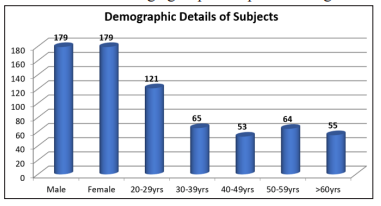
Figure 1: Demographic Details of Subjects
Result
A total of 358 participants submitted the survey out of which 179 were female and 179 were male. Among the final sample, 121(33.7%) were between the age 20-29yrs, 65(18.4%) belonged to the age group 30-39yrs, 53(14.8%) belonged to the age group of 40-49yrs, 64(17.8%) were between age 50-59yrs & 55 people were aged >60yrs. Adverse events under study are illustrated in Figure 2. Statistical analysis shows that when compared between males and females all the parameters were significantly different with P<0.001. A greater number of females showed presentation of adverse events after vaccination as compared to males. (Fig2)
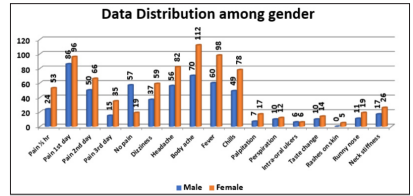
Figure 2: Data distribution among male and female
When compared between different age groups, statistical analysis showed that difference in the presentation of adverse events between age groups ranging from 20-29yrs,30-39yrs,40-49yrs,50- 59yrs & >60yrs was highly significant with P < 0.001. As the age increased the frequency of presentation of some adverse events such as dizziness, headache, body ache, fever & chills decreased. (Figure 3)
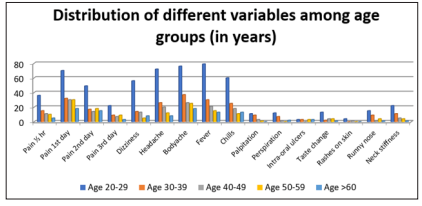
Figure 3: Shows the distribution of different variables among 5 age (in years) groups.
Fever incidence among the sample when calculated showed that 57% of individuals did not experienced fever, among the 43% who experienced fever 33% reported fever range between 99-100?C & only 10% experienced fever range between 100-103?C. (Figure 4) Pain assessment was done using a numerical rating pain scale (Figure 5) .
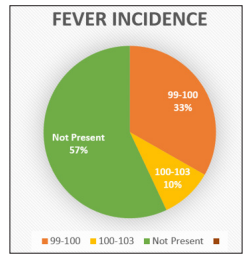
Figure 4: Showing Fever Incidence among the sample

Figure 5 : Numerical Rating Pain Scale
A graphical representation of the pain assessment collected in the survey is shown in Figure 6. Statistical analysis shows that there is a significant difference in pain experienced at different time intervals (within half an hour, on 1 st day.2 nd day & 3 rd day) after COVISHIELD vaccination (P<0.001).
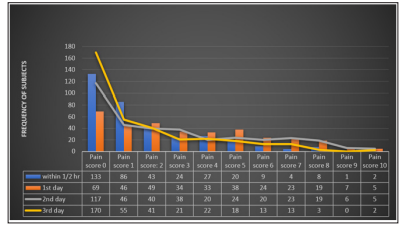
Figure 6: Graphical representation of pain assessment
Discussion
To the best of our knowledge, this study is the first of its kind. We studied the adverse effect of the COVISHIELD vaccine on the human body and calculated the prevalence of its adverse effects. On average 36.5% of people showed a presentation of mild pain,18.7% presented with moderate pain, 9.8% showed severe intensity of pain & 34.1% did not present with any pain within the first 3 days of vaccination. A highly significant difference in the presentation of adverse events was found between different age groups and between males and females. The most prevalent adverse event amongst females was found to be body ache and the least prevalent was rashes on the skin. Males on the other hand did not experience rashes. The most prevalent adverse event amongst males was pain at the injection site on 1st day and the least prevalent was intra-oral ulcers.
Adverse events experienced by the population under study are known events that can occur after any vaccination. Fact sheet uploaded by the serum institute of India enlists side effects of COVISHIELD vaccine into 3 groups (Table1) [4]. According to our study a similar table (Table 2) showing very common, common & uncommon events is enlisted. Few of the symptoms like dizziness and fever listed as uncommon and common respectively by the serum institute of India were found to be very common in our sample.
Table 1: Adverse events of COVISHIELD enlisted by The Serum Institute of India
| Very common: may affect more than 1 in 10 people |
Common: may affect up to 1 in 10 people |
Uncommon: may affect up to 1 in 100 people |
|---|---|---|
| Tenderness at the injection site |
Lump at the injection site |
Dizziness |
| Generally feeling unwell |
Fever | Decreased appetite |
| Fatigue | Vomiting | Abdominal pain |
| Chills | Flu-like symptoms (high temperature, sore throat, runny nose, cough & chills) |
Enlarged lymph nodes |
| Headache | Excessive sweating | |
| Nausea | Itchy skin or rashes | |
| Joint pain/muscle ache |
Table 2: Adverse Events of COVISHIELD, according to our study
| Very common: may affect more than 1 in 10 people |
Common: may affect up to 1 in 10 people |
Uncommon: may affect up to 1 in 100 people |
|---|---|---|
| Pain at injection site | Taste change | Rashes |
| Dizziness | Runny nose | |
| Headache | Intra-oral ulcers | |
| Body ache | Perspiration | |
| Fever | Palpitation | |
| Chills | Itchy skin or rashes | |
| Neck stiffness |
Conclusion
This study concludes that the most common adverse event experienced was Pain at injection site (50.83%) & body ache(50.83%) followed by fever (43%) & headache(38.54%) and least common included rashes on skin (1.39%) followed by intraoral ulcers (3.35%). Gender & age difference in adverse event presentation was statistically significant.We hope our study puts lights on the events which people have experienced & encourages everyone to get vaccinated.
References
- The Center for Systems Science and Engineering (CSSE) at Johns Hopkins University (JHU),COVID-19 Dashboard available from: https://gisanddata.maps.arcgis.com/apps/opsdashboard/index.html#/bda7594740fd40299423467b48e9ecf6[assesed 13th February 2021]
- Available From: https://www.covid19india.org/
- Available from: https://www.thehindu.com/news/national/coronavirus-serum-institute-of-indias-covid-19-vaccinecovishield-likely-to-be-approved-for-emergency-use-inindia/article33472324.ece
- The serum institute if India PVT LTD. Coronavirus disease(COVID-19): Vaccines. Available from : https://www.seruminstitute.com/product_covishield.php[assesed 15thFebruary 2021]
- Ministry of Health and Welfare, Government of India. Available from: https://www.mohfw.gov.in/ [assessed 12th February]
- Jain S, Dubey S, Jain S (2016) Designing and validation of a questionnaire. Int Dent Med J Adv Res 2:1-3.

